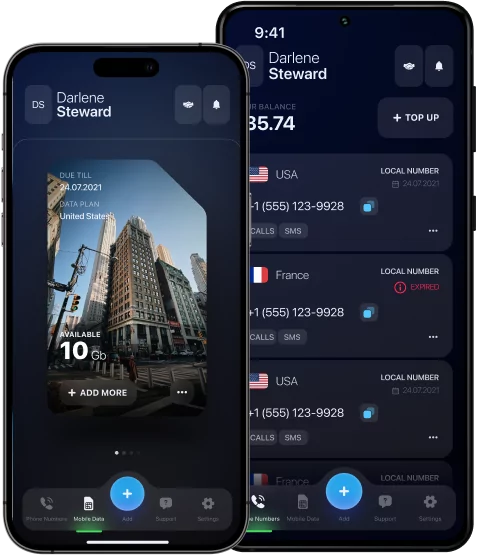The Best Things to Do in Singapore: Travel & Admire
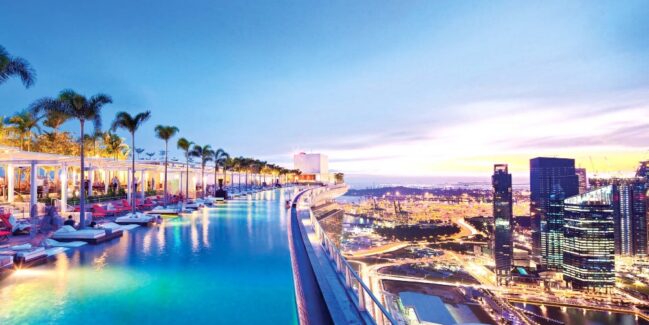
Singapore is the “city of the future” and one of the most developed countries in the world. Let’s look at the best things to do in Singapore for everyone.
Despite its unique modest territory and lack of useful resources, Singapore has managed to create an economic miracle over several decades. It has turned from a poor Malaysian territory into a strong independent, economically developed state.
For many years, tourists have come to Singapore mainly by transit. The local Changi Airport is the largest transfer hub on the way to the more exotic countries of Southeast Asia and Oceania. It was only relatively recently that the authorities of this city-state began to promote Singapore as an independent tourist destination, and it quickly won the love of travelers from all over the world.
Learn the best things to do in Singapore for everyone and how to stay in touch with the world using the best eSIM for Singapore during your trip.
The Best Things to Do in Singapore: Top 30 Places for Everyone
If you suddenly find yourself in Singapore or are planning a trip to this innovative city, then here are the top 30 things to do in Singapore where you definitely need to go and get a storm of experience, emotions, and impressions.
1. Flower Dome
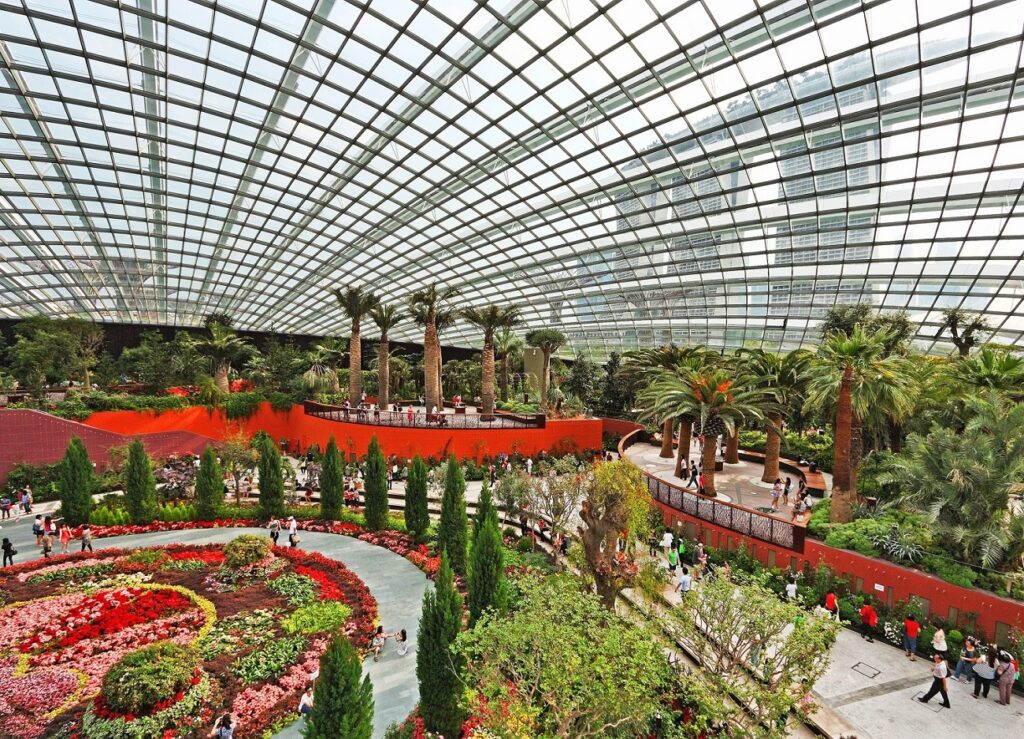
The Flower Dome is considered the largest greenhouse in the world. The space under the high glass roof without supports is divided into several zones — South American, Mediterranean, South African, and desert with a collection of succulents and an Australian garden. The Flower Dome gardens grow on three tiers and spiral down to the flower field. This is a great place to walk on a hot day, as the air in the greenhouse is always cooler and drier than outside. In the evening, fabulous lighting turns on inside, allowing you to wander along multi-level paths road until 2 a.m.
2. Singapore Botanic Gardens
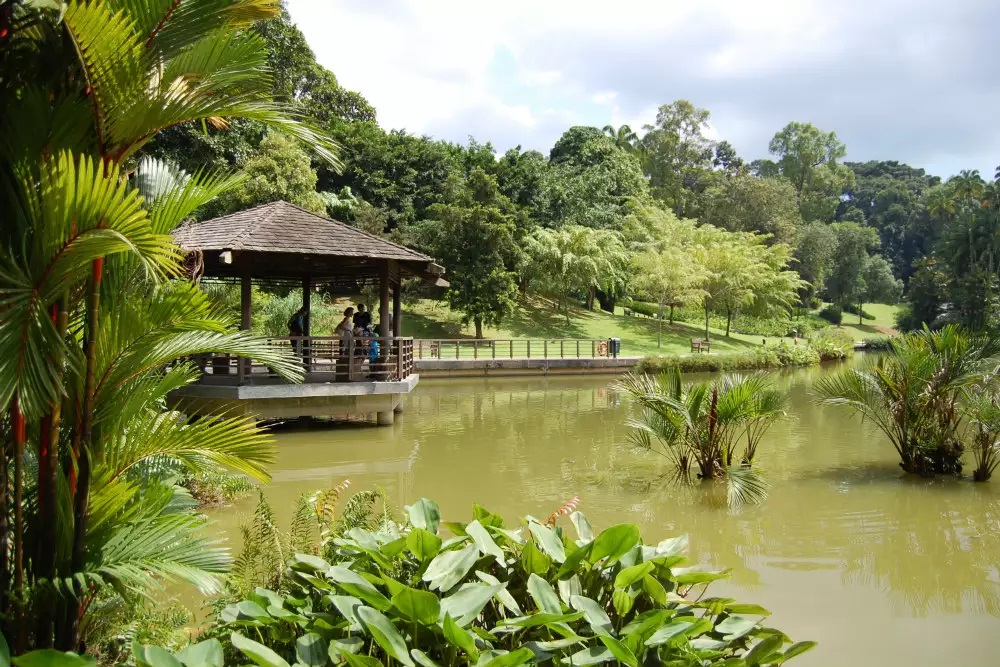
The Singapore Botanic Gardens stretches over 82 hectares, almost in the very center of Singapore. This is a real rainforest that has become home to 10,000 species of plants.
In the Botanic Gardens, you will find many interesting places — a tropical forest, a palm alley, and a Swan Lake. The National Orchid Garden has the largest collection of these magnificent flowers in the world. Bonsai Garden introduces Japanese ikebana culture. A piece of desert with a large collection of succulents is reproduced in the Sunny Garden. There is a first specialized dining restaurant in the Ginger Garden, where you can try a variety of dishes with ginger.
3. Singapore Flyer

The Singapore Flyer arrived for the first passengers in 2008. The panorama of Singapore opens from the height, and in good weather the Indonesian islands of Batam, Bintan, and Malaysian Johor are visible. The height of the wheels is 165 m, the diameter is 150 m. Along with the private cabin of the attraction, 28 “space” capsules are installed, which can accommodate up to 28 people. A full turnaround takes 28 minutes. Air conditioning and comfortable armchairs allow you to comfortably admire the views. The base of the wheel is built into a 3-storey building, where there is a terminal, a shop, a bar, and a restaurant. This is one of the best things to do in Singapore.
4. Singapore Cable Car
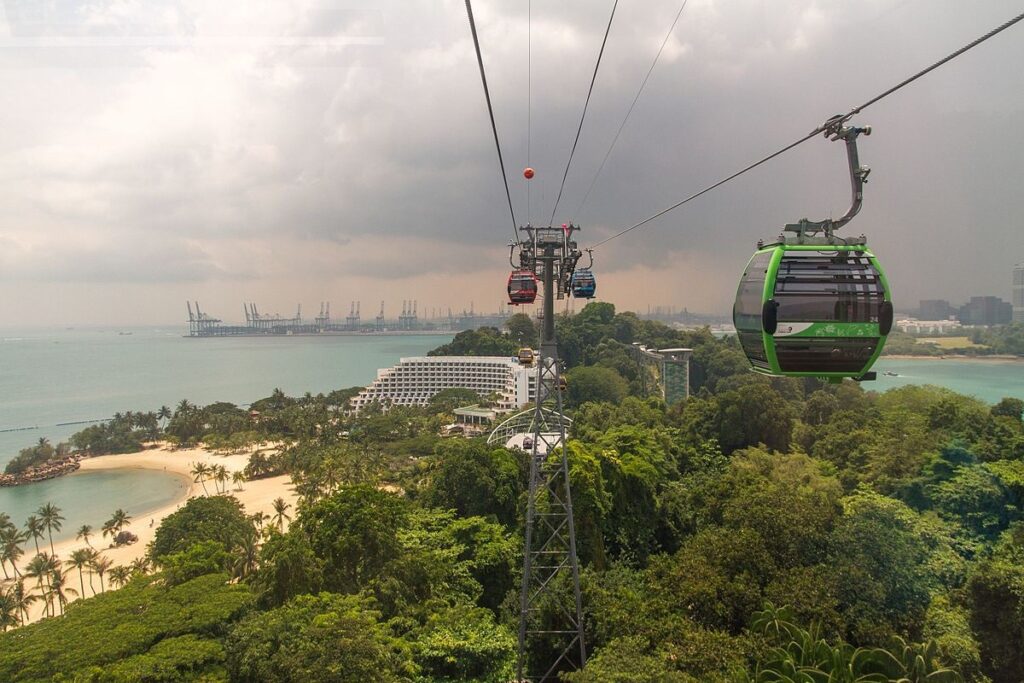
The Cable Car consists of two independent parts — Mount Faber, launched in 1974, and a new road built in 2015 and passing over Sentosa Island. The journey from Faber to Sentosa takes 15 minutes. During this time, you will have time to enjoy the beautiful views of the islands and the harbor with white yachts. The length of the line above Sentosa is 890 m. The road passing over the jungle and sandy beaches will take you to the main entertainment locations of the resort island.
5. The Southern Ridges
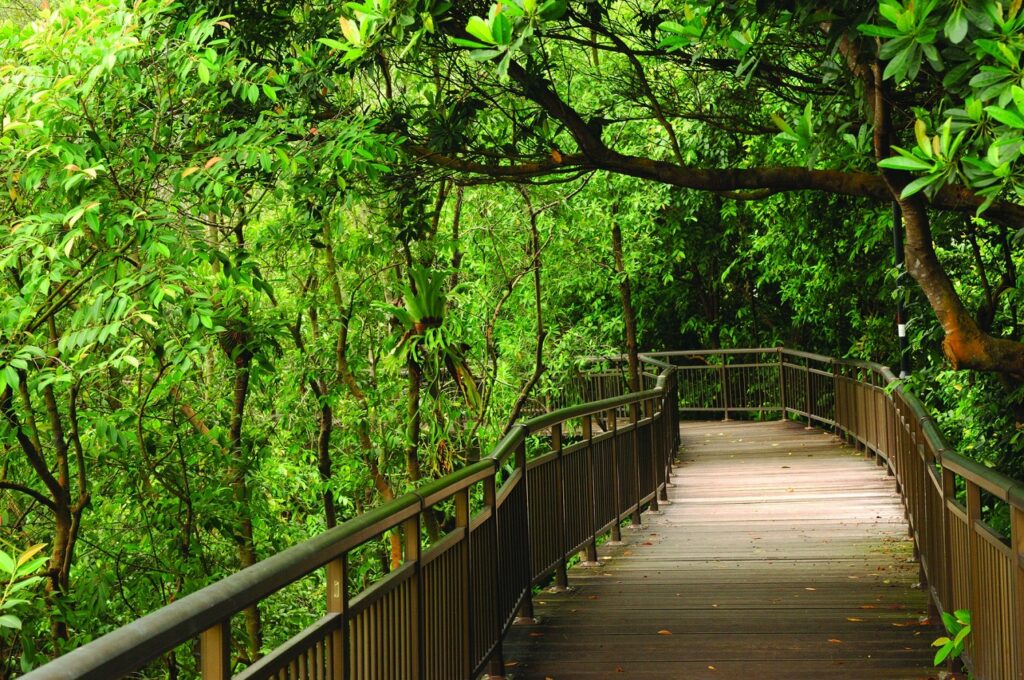
The Southern Ridges is a well-maintained hiking route along the southern mountain range of Singapore, connecting Mount Faber, Telok Blanga Hill, Hort Park, Kent Ridge, and the Labrador Nature Reserve. The total length of the trails is 9.1 km. After passing the green slopes of Kent Ridge, you will come to the gardens of Hort Park. The Alexander Arches Bridge will take you to Telok Blanga Park with a Forest road in the form of mesh ramps, which in places reach a height of 10 meters. A 36-meter “Henderson Waves” bridge spans Henderson Road to Mount Faber Park. Here you can take a break in the shade of unusual undulating structures and admire the surrounding landscape from a height.
6. S.E.A. Aquarium
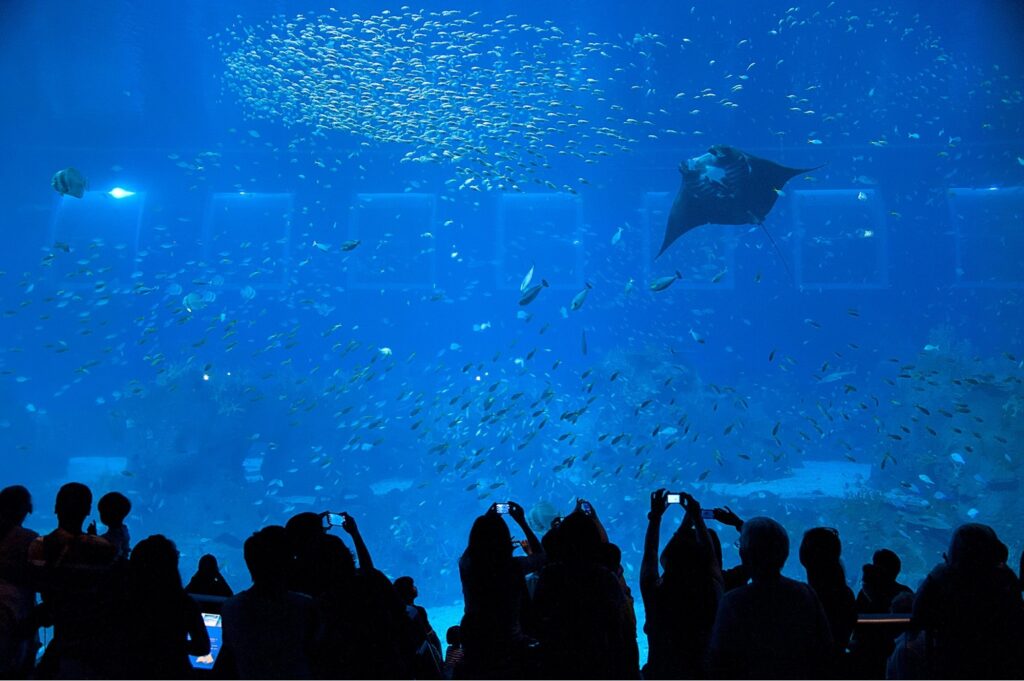
The S.E.A. Aquarium is located on Sentosa Island. You can get to it by bridge, monorail, or cable car. About 100,000 representatives of the fauna of the world’s oceans live in 49 habitats divided into 10 zones in aquariums and pools. Near the entrance, the touch pools contain fish and invertebrates that can be touched and fed — stingrays, small sharks, and starfish.
The aquarium has aquariums with portholes that create an immersive effect, an 83-meter underwater tunnel, and a two-story vertical aquarium with inhabitants of the Pacific and Indian Oceans.
7. The Helix Bridge
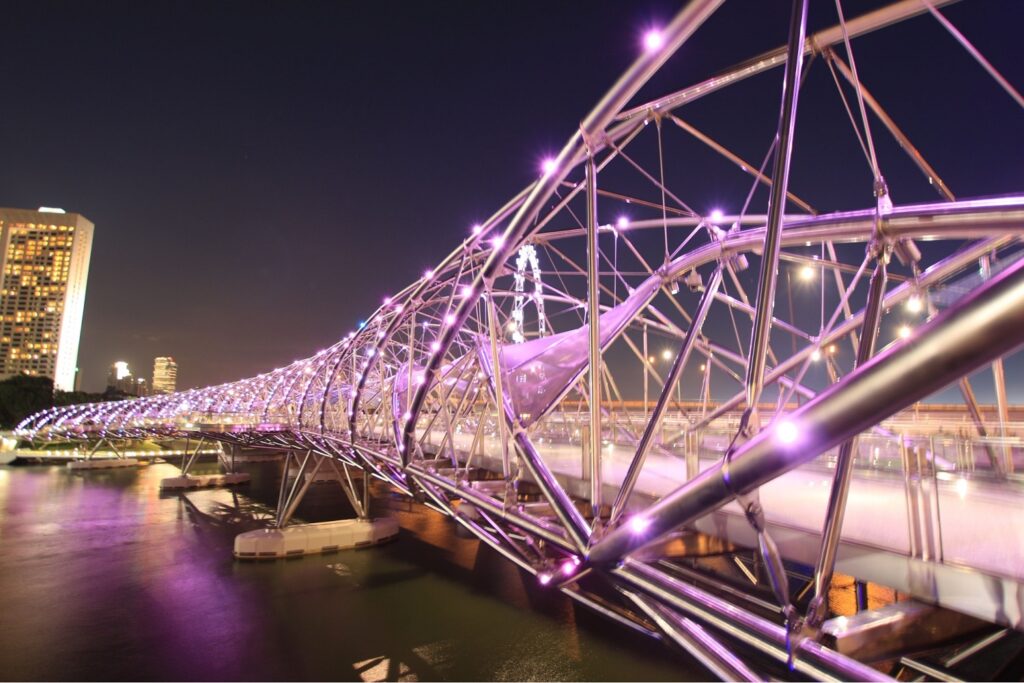
The Helix Bridge connects the shores of Marina Bay, connecting the Esplanade Theater with the Marina Bay Sands Hotel and Casino. The design in the form of a DNA molecule carries a semantic load. It contains the idea of the integrity and harmony of the human body. The inner spiral has a glass coating, the technological outer one provides climate control and outdoor lighting. There are five observation platforms on the pedestrian bridge. The length of the pedestrian crossing is 280 meters. Under the feet of passers-by, two pairs of letters C and G, A and T, are highlighted, denoting the main substances of the DNA molecule cytosine-guanine and adenine-thymine.
8. Universal Studios
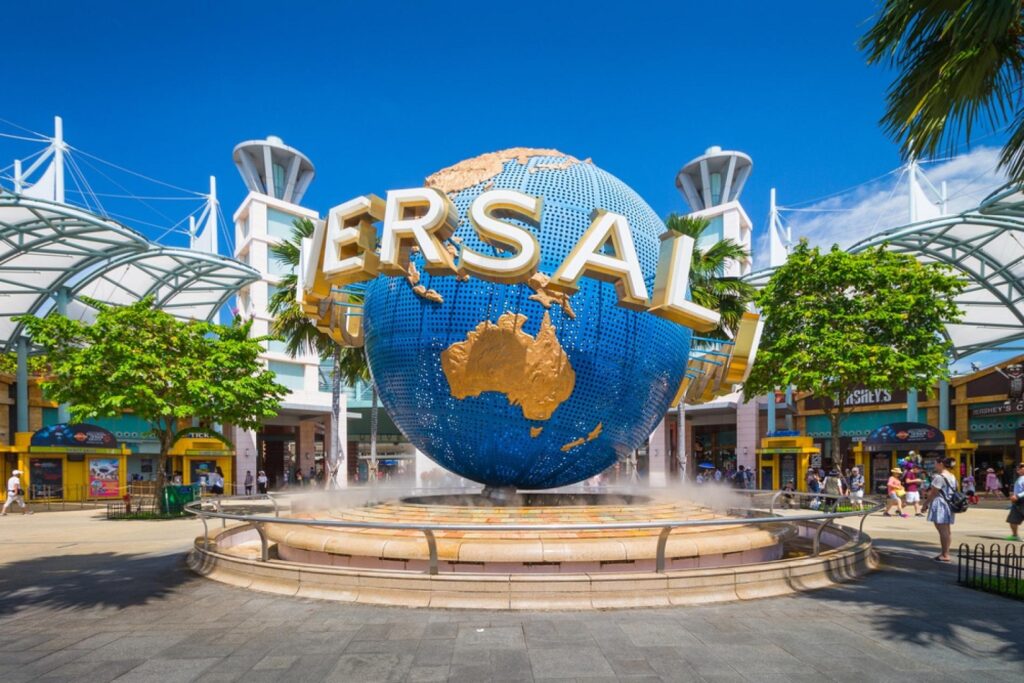
Universal Studios Amusement Park is located on Sentosa Island near Singapore. This is the only Universal Film Studio theme park in the world. Each attraction here is decorated according to the plots of famous features and animated films. The casino, Adventure Cove water park, SEA Aquarium, Marine Experimental Museum, and Dolphinarium are located on 20 hectares.
9. Sri Mariamman Temple
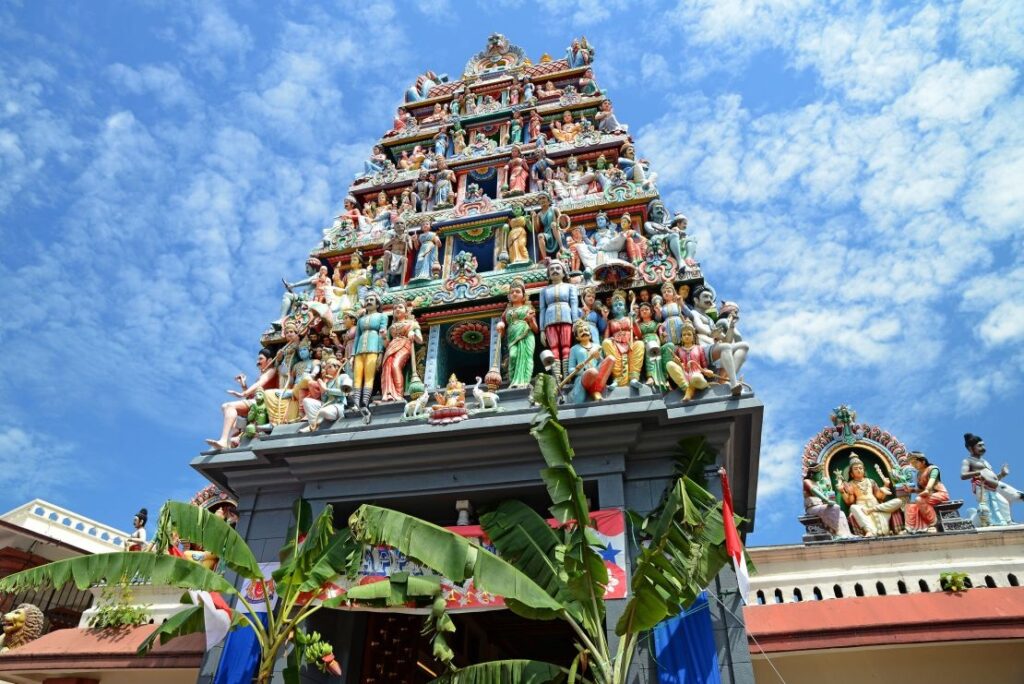
Sri Mariamman is the oldest Hindu temple in Singapore. It is rightfully considered one of the most interesting sights of the city. The building that has survived to this day dates back to 1862–63. In 1915, a multi-level tower was built over the gates of the pagoda. Figures of deities, mythical creatures, ordinary parishioners, and animals are carved and brightly colored on several tiers. An arched gallery, painted with frescoes and decorated with sculptures, leads to the entrance to the sanctuary. Entrance to the temple is free but a fee must be paid for the opportunity to take photos.
10. Bukit Timah Nature Reserve

Bukit Timah is located 12 km from the center of Singapore on the slope of Bukit Timah Hill. It was founded in 1883 to save the Central Region from deforestation. The reserve includes the territory of the Botanical Garden, Fort Canning Park, and the urban catchment area. Today, the nature reserve with walking and cycling trails, bridges, convenient stairs, benches, and picturesque corners for photo shoots is a favorite vacation spot for Singaporeans. A tram runs through the park. Information signs with descriptions of the inhabitants of Bukit Timah and interesting facts from its history are installed everywhere.
11. Sungei Buloh Wetland Reserve
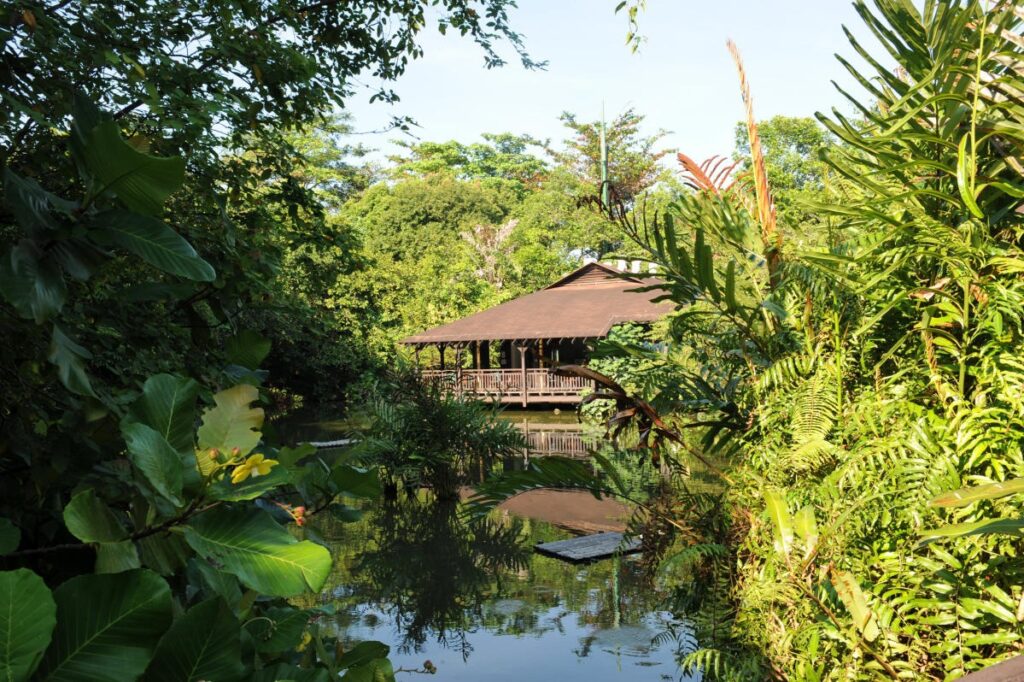
Sungei Buloh Wetland Reserve is spread over 202 hectares in the northwestern part of Singapore. Hundreds of species of different life forms live among mangroves, on shallows, in ponds, and in forests. Special trails in the form of boardwalks and metal bridges have been laid through the park, and towers have been built for covert surveillance of the inhabitants of the reserve.
12. Gardens by the Bay
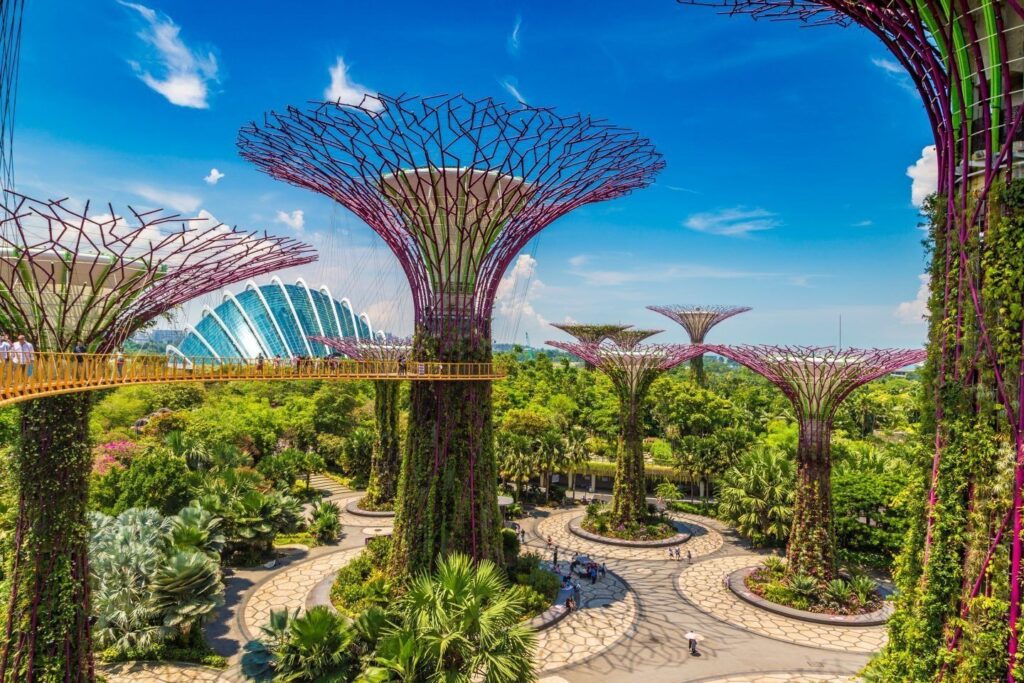
The park consists of several gardens — South, East, and Central. In total, 225,000 tropical plants from Africa, Asia, and South America are planted in them. The 54-hectare Southern Garden has greenhouses, a flower Dome, and a Cloud Forest. The famous Supertrees Grove, tree-like structures with a height of 25 to 50 m, also “grow” here. These are peculiar vertical gardens, they are entwined with vines, grapes, ferns, and orchids. Supertrees are functional, some provide air conditioning for greenhouses, and others collect rainwater to irrigate gardens and fountains. At an altitude of 22 meters, they are connected by a 128-meter above-ground gallery, which offers a panorama of the Southern Garden.
13. Infinity Pool
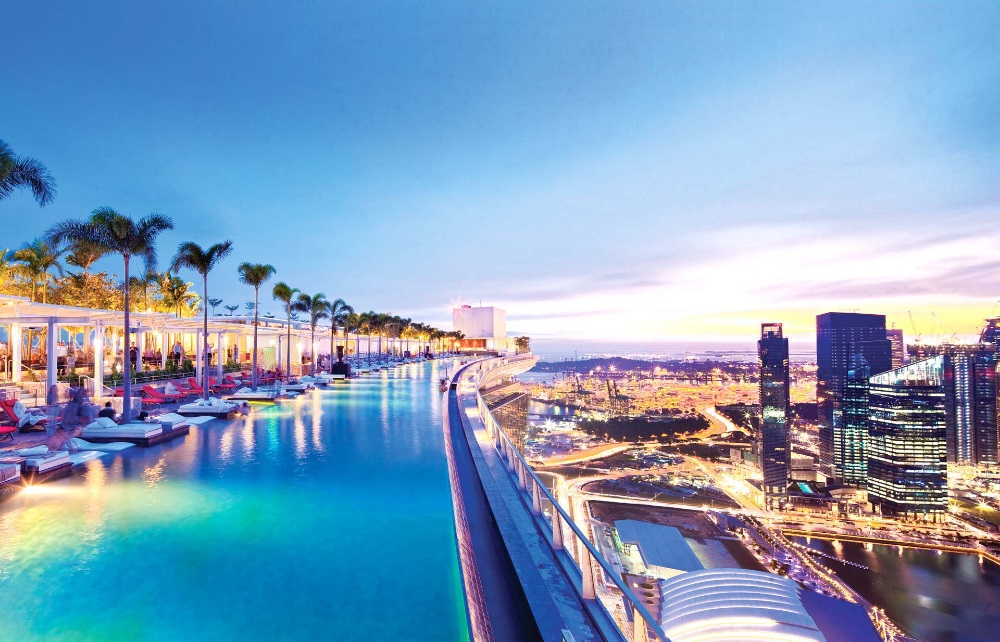
On the roof of the Marina Bay Sands Hotel, there is the largest and tallest Infinity Pool in the world. The optical illusion of infinity creates the feeling of flying over the city below. The 150 m long swimming pool is located on a gondola-shaped platform connecting the three buildings of the hotel at an altitude of 200 m. There is a tropical garden with palm trees around. Sun loungers are set along the sides on wooden decking. Only hotel guests have access to the pool. This is one of the best things to do in Singapore.
14. Jewel Changi Airport
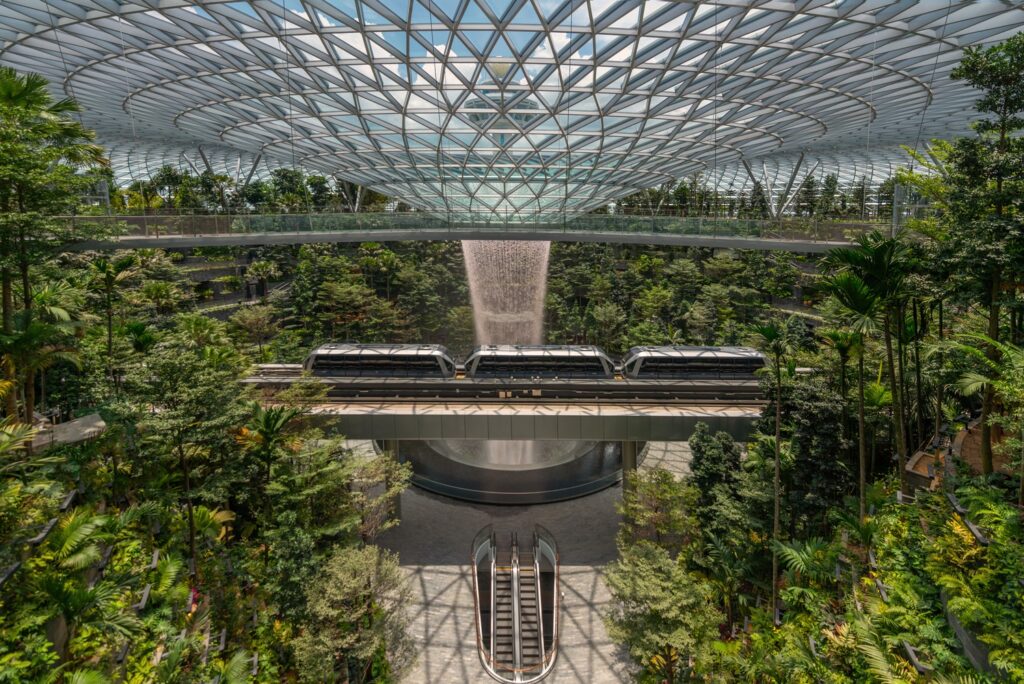
Jewel Changi Airport shopping and entertainment complex has connected three terminals of Singapore Changi International Airport, one of the largest air hubs in Asia. The huge glass and metal structure consists of ten floors, five of them underground. Jewel Changi has an air hotel for travelers, 300 shops and restaurants, an early baggage check-in point, IMAX cinemas, and attractions. The space is decorated with numerous art installations from famous contemporary artists and designers.
The attraction of the shopping center is a huge botanical complex, which includes a terraced “Forest Valley” of Shiseido, blooming gardens, and a suspended park on the upper level, where recreation areas are arranged.
15. Singapore Zoo
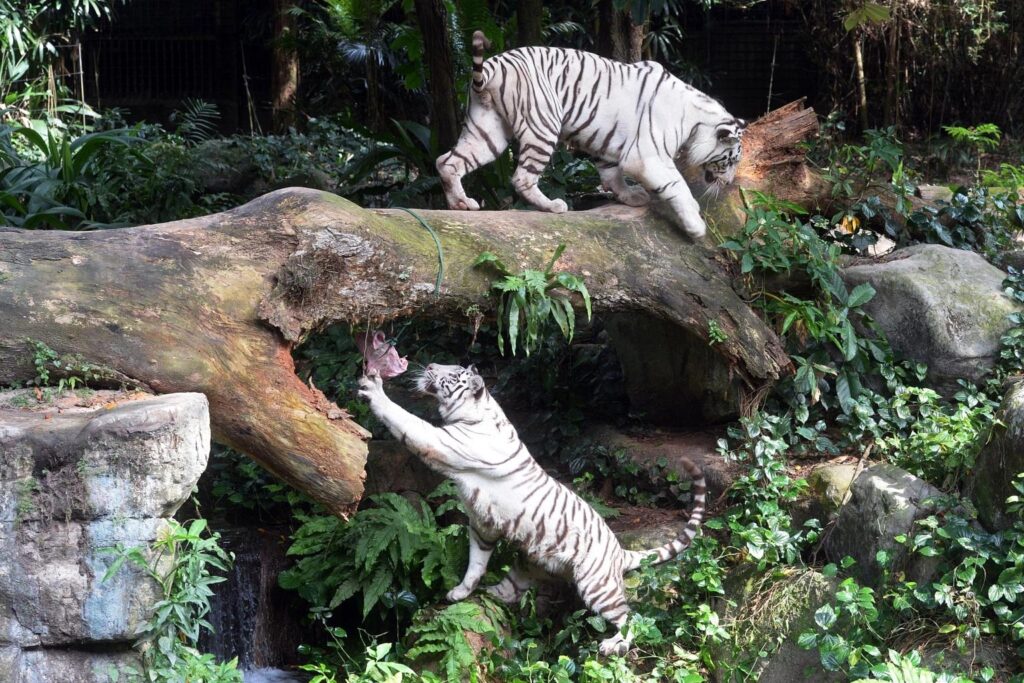
Singapore Zoo is famous all over the world for the special conditions in which animals live. The most natural ecosystem has been created on 28 hectares for each species. It has its own African valley, jungle, desert, and Arctic ice — a total of eight geographical zones. Habitats of different animal species are separated by natural barriers — ditches, thickets, cascading waterfalls. There are glass barriers only where birds and animals can overcome natural barriers. The zoo contains more than 2,500 individuals of 315 species, almost a third of them are rare.
Be connected while traveling around Singapore and use the best eSIM for Singapore!
16. Esplanade
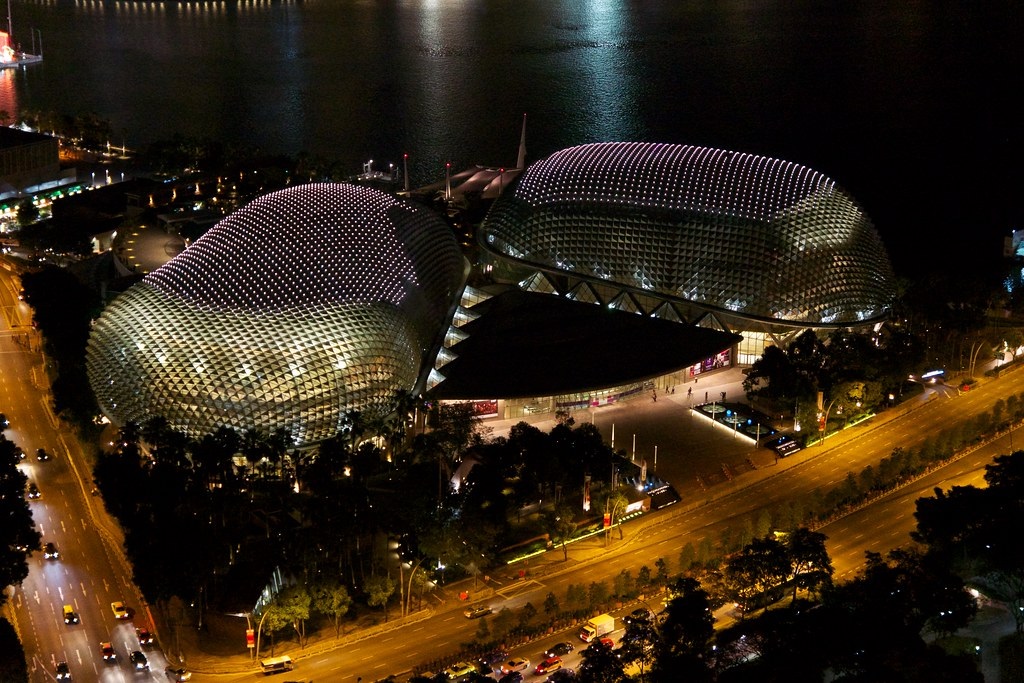
The Esplanade Theatre is another masterpiece of recognizable Singaporean architecture that graced the shores of Marina Bay in 2002. The shape of the building is similar to the two halves of durian. The huge glass domes are covered with thousands of aluminum sunscreens, their shape resembles the scaly peel of a tropical fruit. The Esplanade is a performing arts center with two halls — a concert hall with 1,600 seats and a theater hall with a capacity of 2,000 spectators. In addition, the Esplanade has a small studio for chamber music performances, rehearsals, meetings, and events, a theater studio, an outdoor stage, a shopping center, conference rooms, a public library, and an exhibition gallery.
17. Sands SkyPark
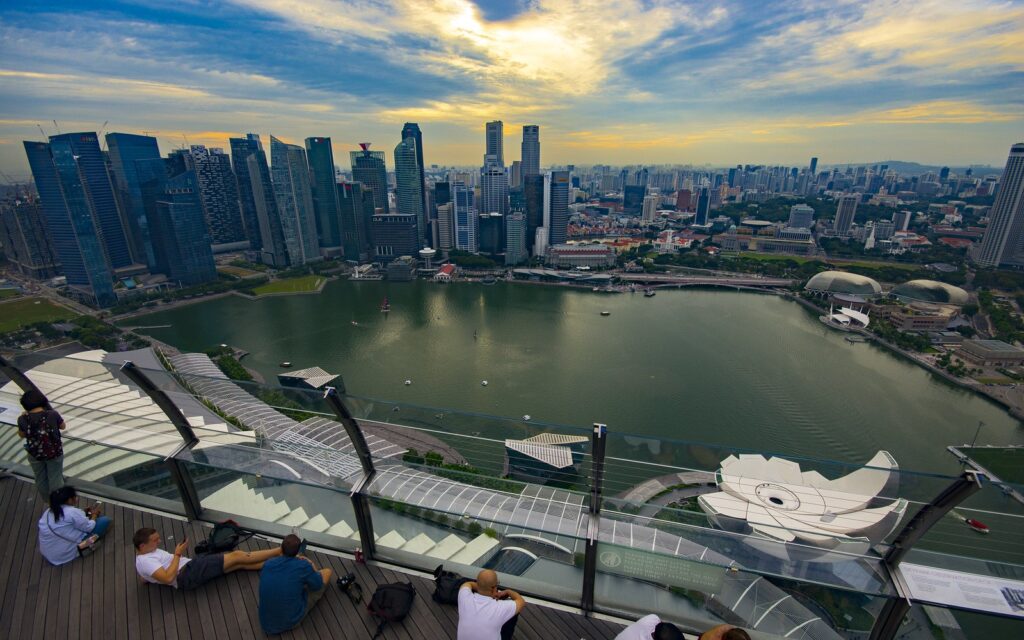
The Sands SkyPark observation deck is located in the Marina Bay Sands complex, and consist of three towers. At the 57th floor level, they are united by a deck with a park, lounge areas, bars and, an Infinity Pool. The observation deck offers the best view of the bridges, the wheel, the Supertree Grove, the domes of the Esplanade Theater, the neighborhoods lying in the distance, and Marina Bay.
18. Buddha Tooth Relic Temple and Museum
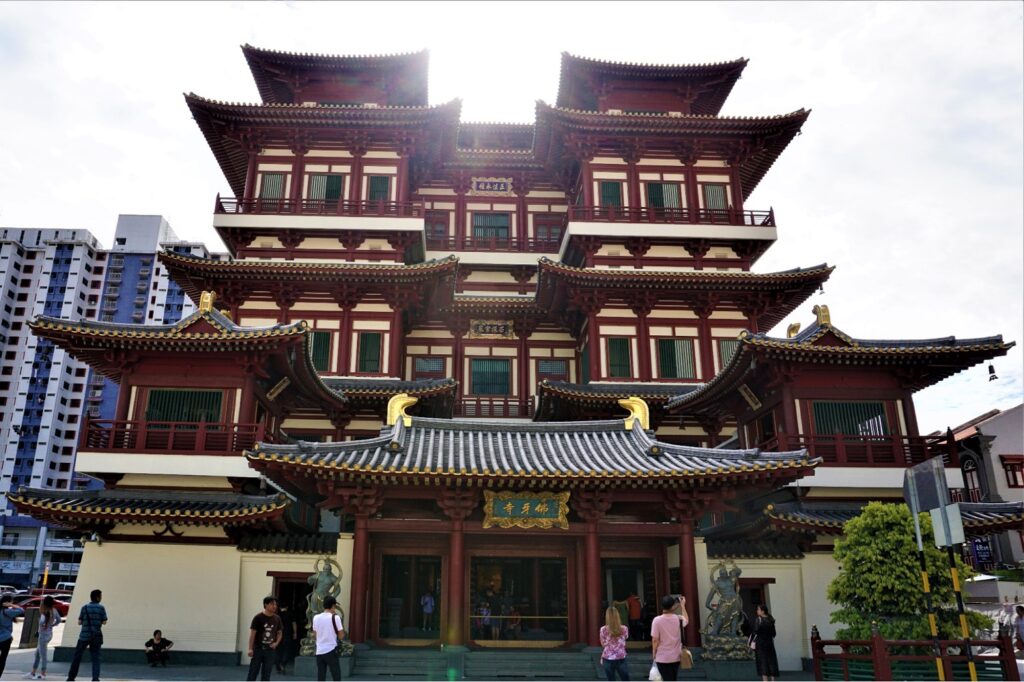
Buddha Tooth Relic Temple and Museum is located in the center of Singapore Chinatown. It was built in 2007 specifically for the storage and display of a precious relic — the Sacred Tooth of Buddha Shakyamuni. After several years of discussion of the project, the Tang Dynasty style with elements of Tibetan Buddhism in the design of some halls was chosen for the temple. The main gate with massive handles in the form of lion heads is guarded by two Japanese-style statues — the personification of the Bodhisattva of the power of Mahasthamaprapta with a bundle of lightning in his hand.
19. MacRitchie Reservoir
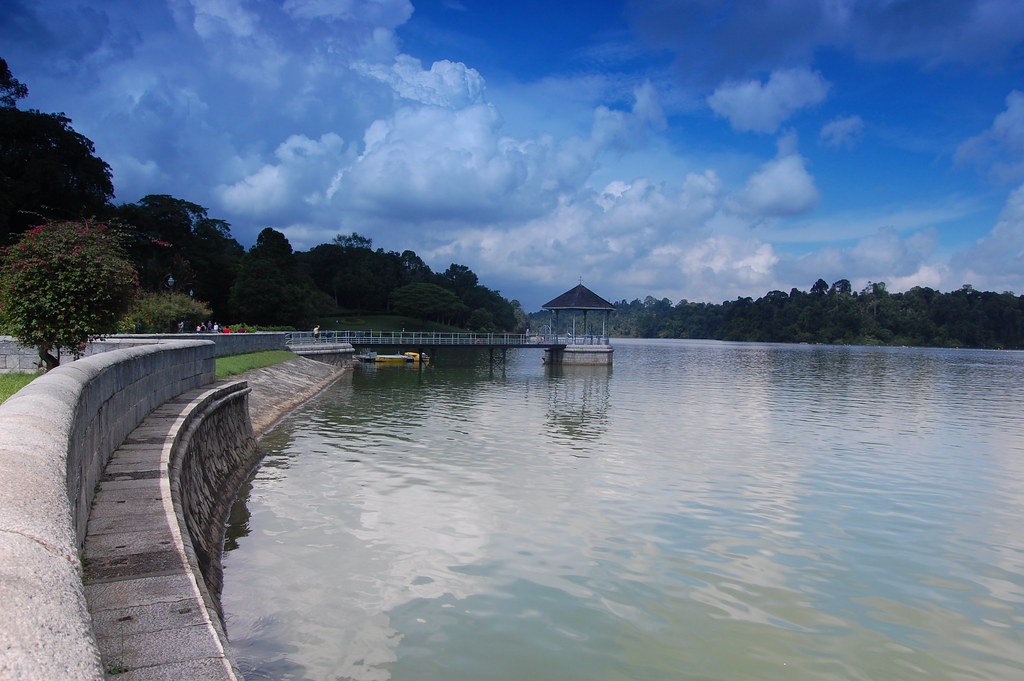
The McRitchie Reservoir is located in the center of Singapore, surrounded by jungle, divided into three parks. One of them is McRitchie Park with numerous walking paths, forest trails, and a suspension bridge connecting the tops of two low hills. The 12-kilometer McRitchie Nature Trail runs around the artificial lake — the most popular route, where there are always a lot of walkers and runners. There are playgrounds with sports equipment along the trail. Along the way, there are gazebos where you can take a break, and enjoy the beauty of nature and the sounds of the rainforest.
20. Lee Kong Chian Natural History Museum
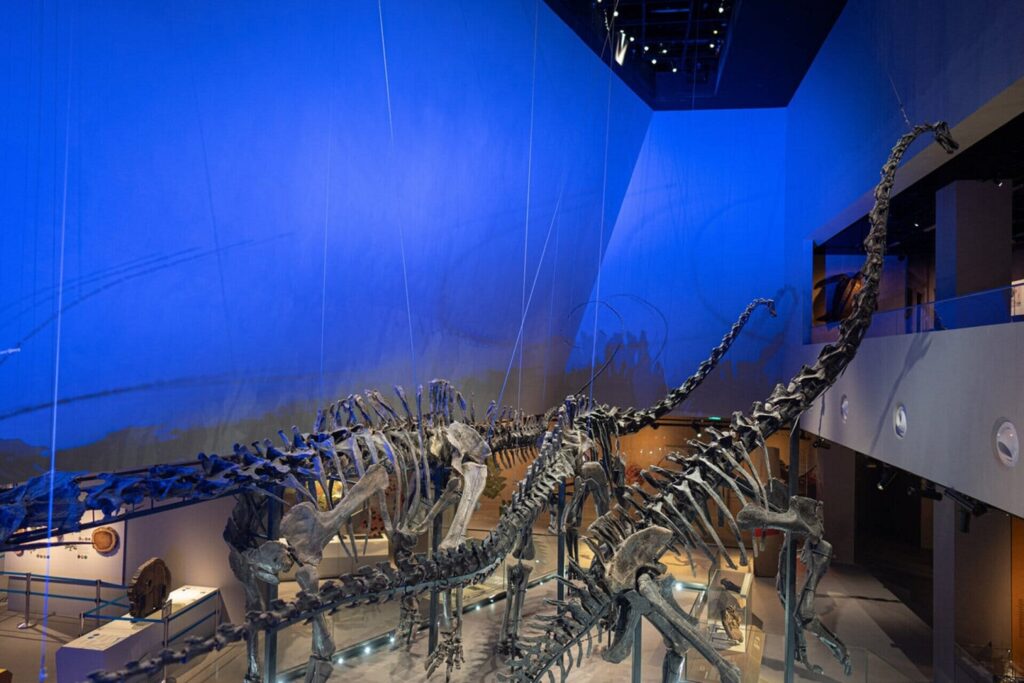
The Lee Kong Chiang Museum of Natural History was founded in 2014 at the Faculty of Natural Sciences of the National University of Singapore. His rich collection is based on exhibits that began to be collected in 1849 by the Raffles Museum (now the National Museum of Singapore). More than 1 million exhibits representing the animal and natural world of Southeast Asia are stored in the huge exhibition area and in the storerooms. 15 expositions tell the story of the origin and development of life on Earth. The halls exhibit samples of plants, fungi, mollusks, arthropods, animals, birds, mammals, and reptiles. Separate exhibitions are devoted to the nature and history of Singapore.
21. Mount Faber Park
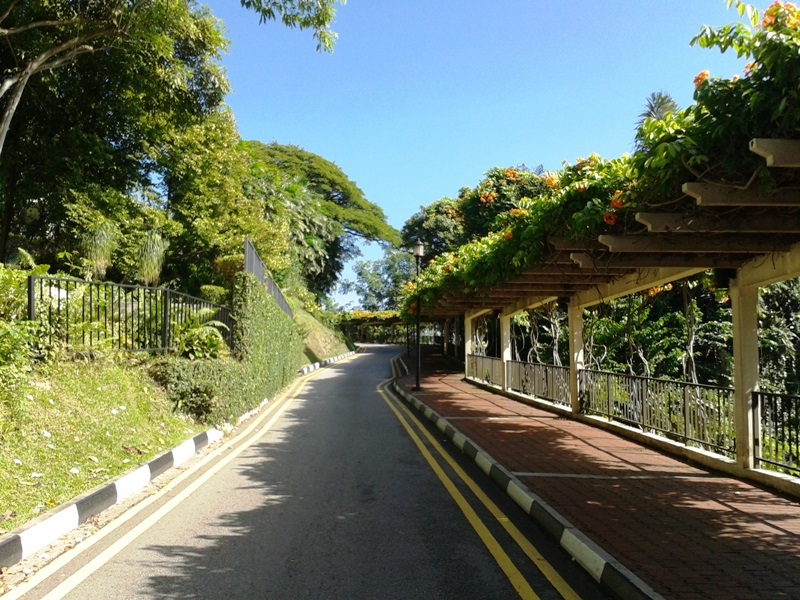
Singapore’s oldest Mount Faber Park is located on the slopes of Mount Faber, a 106 m high hill covered with rainforest. Riddled with many paths, alleys, and sports tracks, it remains one of the most popular places for walking and recreation. The observation decks offer views of the big city, and telescopes can even see the business districts of Singapore’s main island lying in the distance. The Southern Ridges hiking trail runs through the park on Mount Faber. At the top, there is a station of the Singapore Cable Car leading to Sentosa Entertainment Island.
22. ArtScience Museum

The building in the form of a huge lotus flower on the shore of Marina Bay is the Museum of Art and Science (ASM), which opened in 2011. Thanks to the original design solution, the multi-ton structure seems weightless. The asymmetrical lotus petals are made of 5,000 finished parts connected seamlessly. They are supported by columns that close together in the form of a basket. The height of the “Welcoming Hand of Singapore”, as the museum building is also called, is 60 meters, and the diameter of the base is 11 meters. The ground floor is located underground. At night, the building is illuminated with multicolored lights, effectively complementing the ultramodern panorama of the city.
23. Sultan Mosque
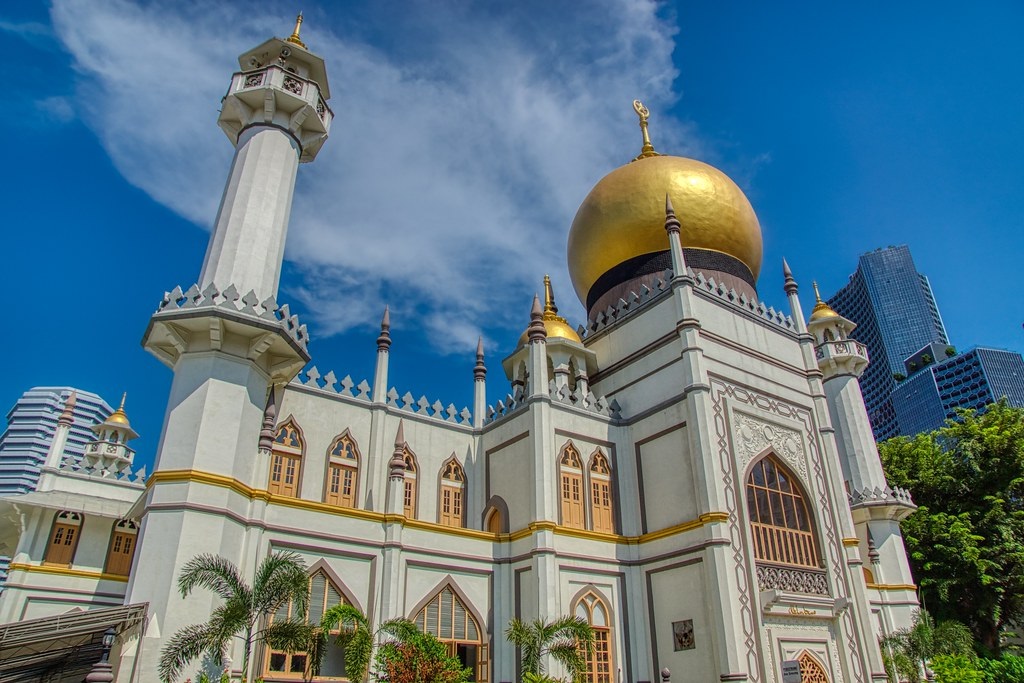
The Sultan Mosque, the main Muslim temple of the city, stands in the Arab Quarter of Singapore. The first mosque was built on this site in 1826. In 1928, it was completely rebuilt according to the design of the Irish architect Denis Sentry. He created a Saracen-style mosque with two massive golden domes, four minarets, thin spires on the roof, and a prayer hall accommodating up to 5,000 worshipers at a time. The lower hall is for men only. Women pray on the balcony of the second floor, which encircles the mosque around the perimeter. On the north and south sides, the hall is framed by arched galleries supported by columns.
24. River Wonders
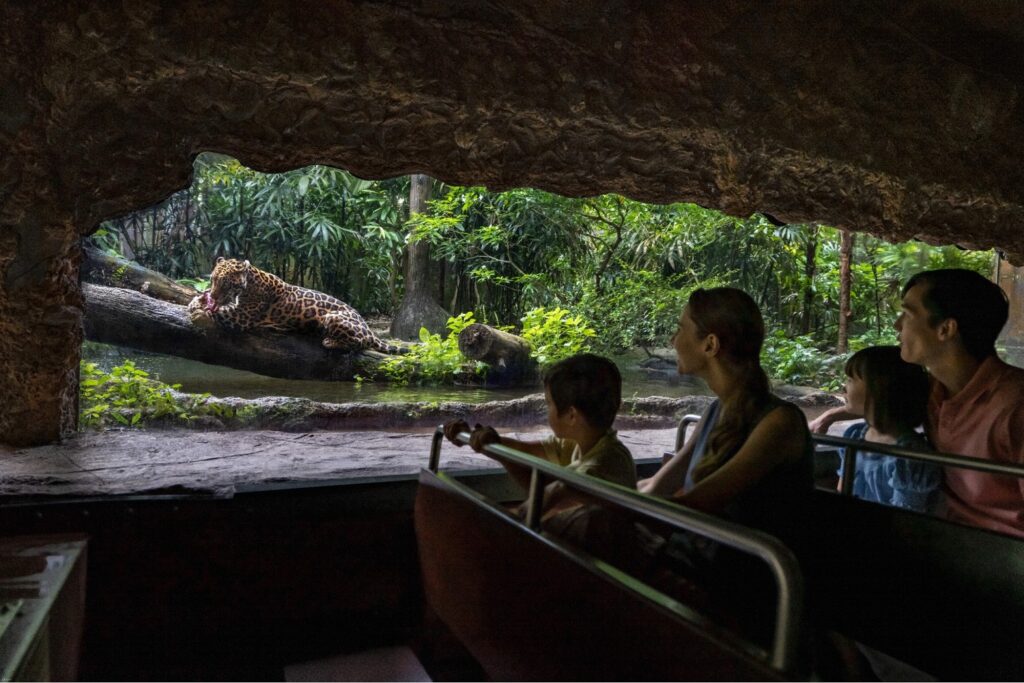
River Wonders is located next to the Singapore Zoo on 12 hectares, where 10 freshwater ecosystems are represented, including the Nile, Yangzhou, Mississippi, Ganges, and Mekong. In the world’s largest freshwater aquarium, under the cover of a tropical forest, 5,000 mammals, reptiles and 300 species of fish live in spacious aviaries. Local pets, giant pandas, rented in China, are kept in special conditions. Visitors are invited to take a river walk through the natural areas of the Amazon to see the animals in their natural habitat.
25. Fountain of Wealth
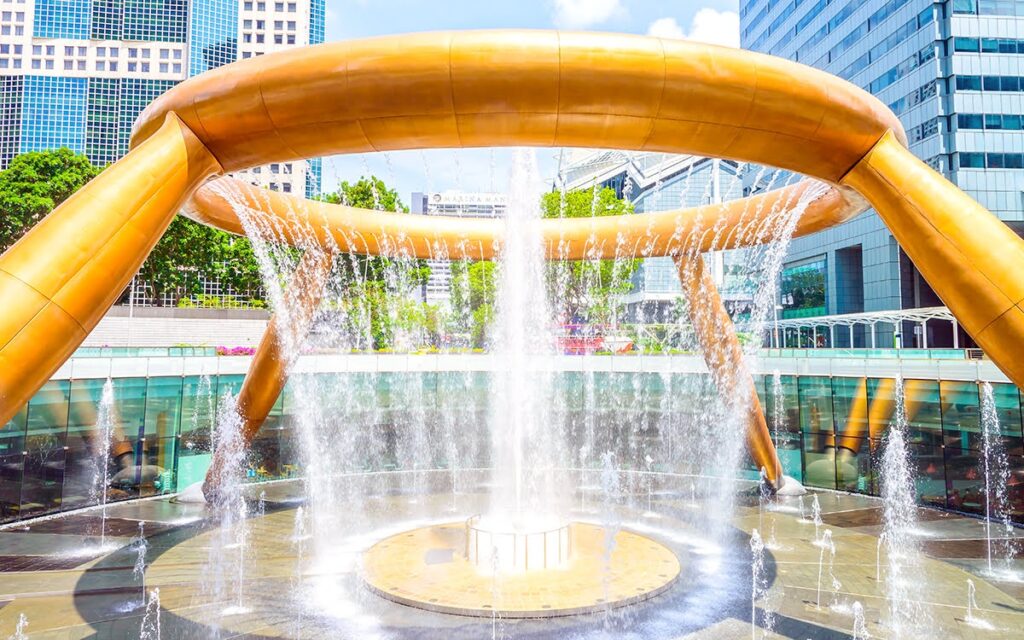
The Fountain of Wealth is famous all over the world for its size and unique technologies that were used during construction. The bowl measuring 1,683 square meters is listed in the Guinness Book of Records. The details of the design of the futuristic structure have a special oriental meaning. The four pillars symbolize the main religions of the country. The upper ring connecting them is part of the mandala, the symbol of the Universe. The combination of bronze details washed by water strings embodies the path to success. To make any wish come true, it is enough to walk around the bowl clockwise three times, touch the water with your hand, and believe in the best.
26. Little India
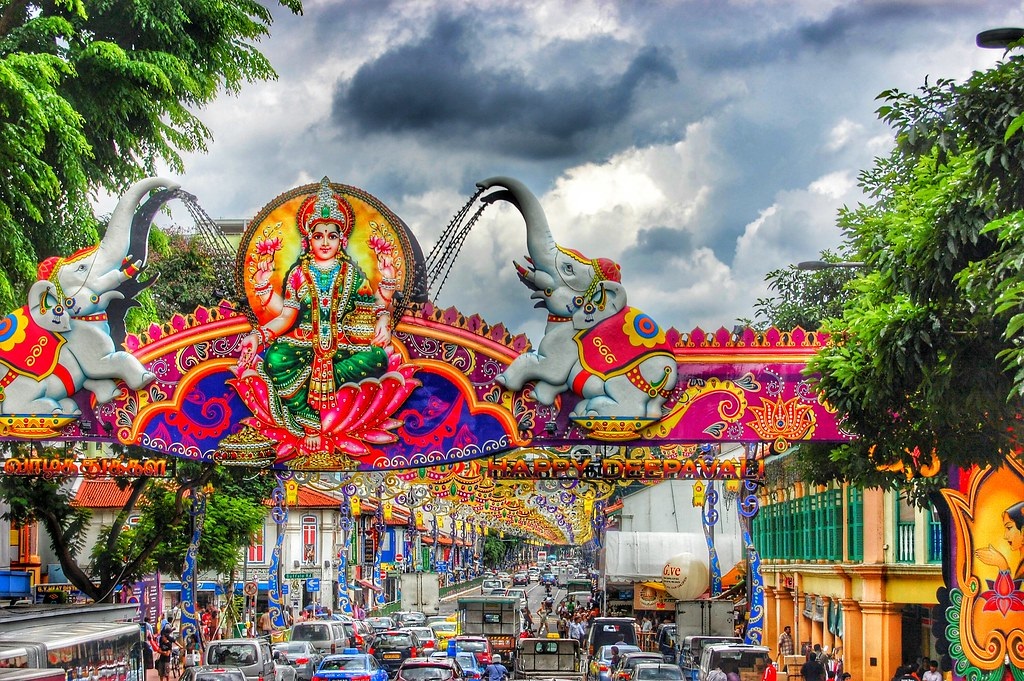
Little India in the Rochor area is a place where immigrants from India have settled since the 19th century. The ethnic composition of Little India is heterogeneous. Three quarters of the population are Chinese. The remaining 25% is divided between Indians and Muslim Tamils.
The main shopping street of Little India is Serangoon Road with large shops and small shops. People come here for Indian rice and spices. The stalls are full of ethnic decorations and bright saris, which are readily bought up by tourists. The restaurants serve the famous Indian delicacy — fish head in curry sauce.
27. Chinatown
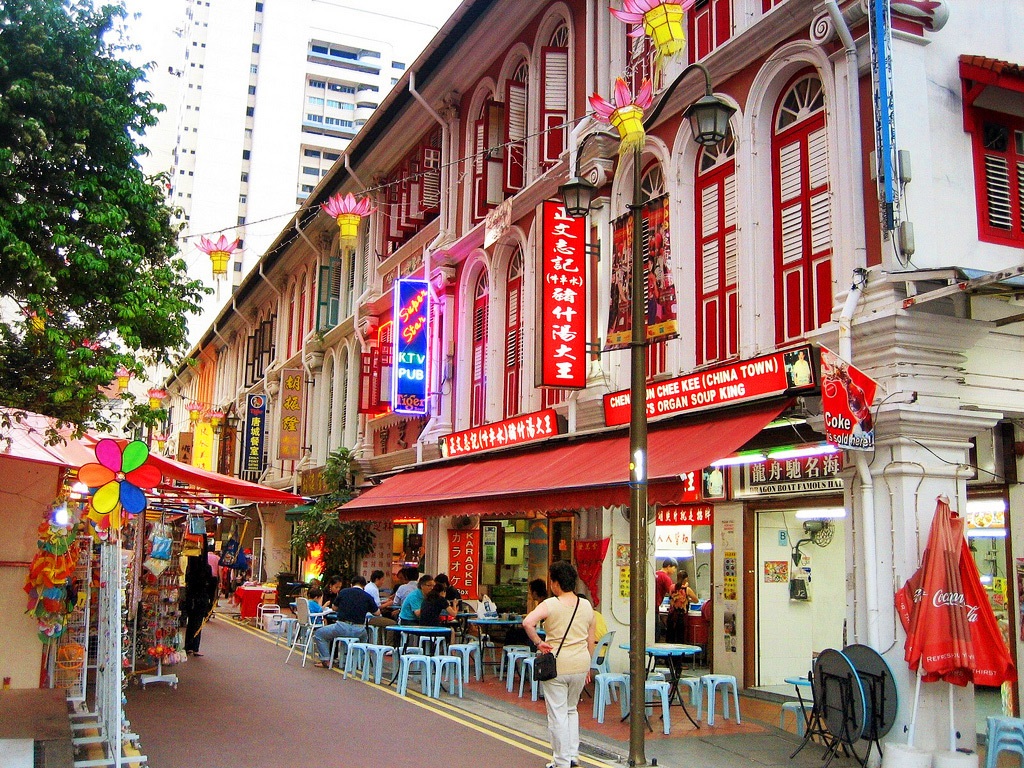
Chinatown in the center of Singapore is strikingly different from the ultramodern towers of the business center, high-tech gardens, and structures on the Marina Bay waterfront. This is a cozy quarter where you will not find a bright national flavor but you will undoubtedly enjoy walking along the neat streets with 2–3-storey houses, interesting works of street art, and sculptural compositions. Traditionally, Chinatown is a culinary paradise for Asian food lovers and budget tourists. The best inexpensive restaurants and cafés are concentrated in the Chinatown Complex Food Centre on Smith Street. This is one of the best things to do in Singapore.
28. Night Safari
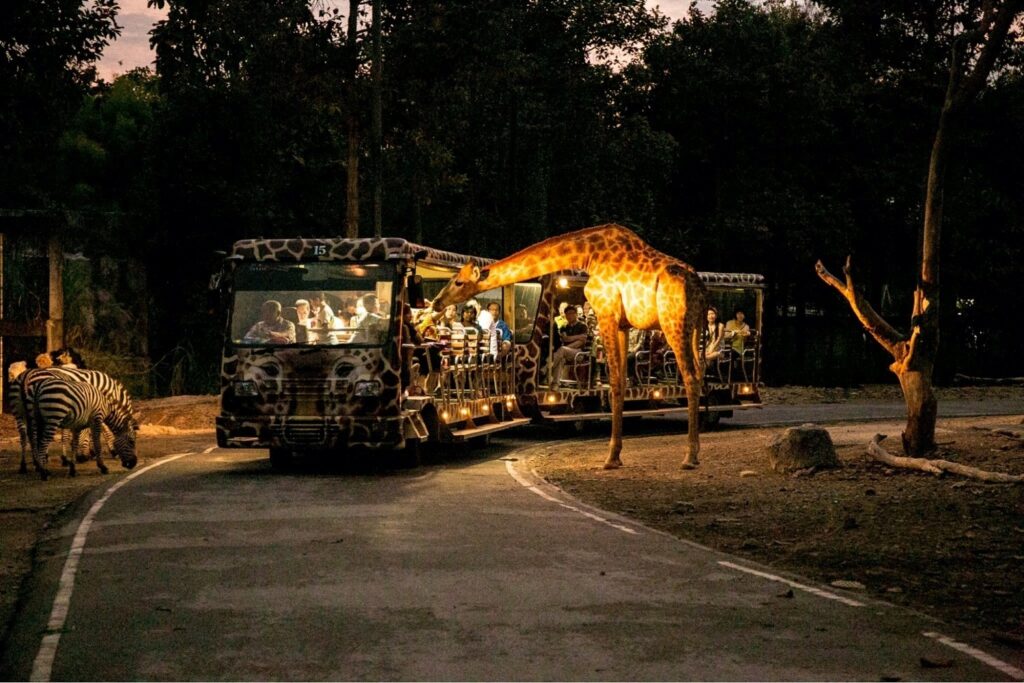
The Night Safari Park is an open space inhabited by more than 1,000 animals from different continents. Almost half of them are endangered species. The park is open from 18.30 to 00.00 — at night, nocturnal animals wake up, which are difficult to see in an ordinary zoo during the day. Trams run throughout the territory. There are hiking trails in some places, and lighting is installed every 300–400 meters. In places where animals congregate, the tram driver makes a stop. There are bars and restaurants in the park, as well as a gift shop.
29. Merlion
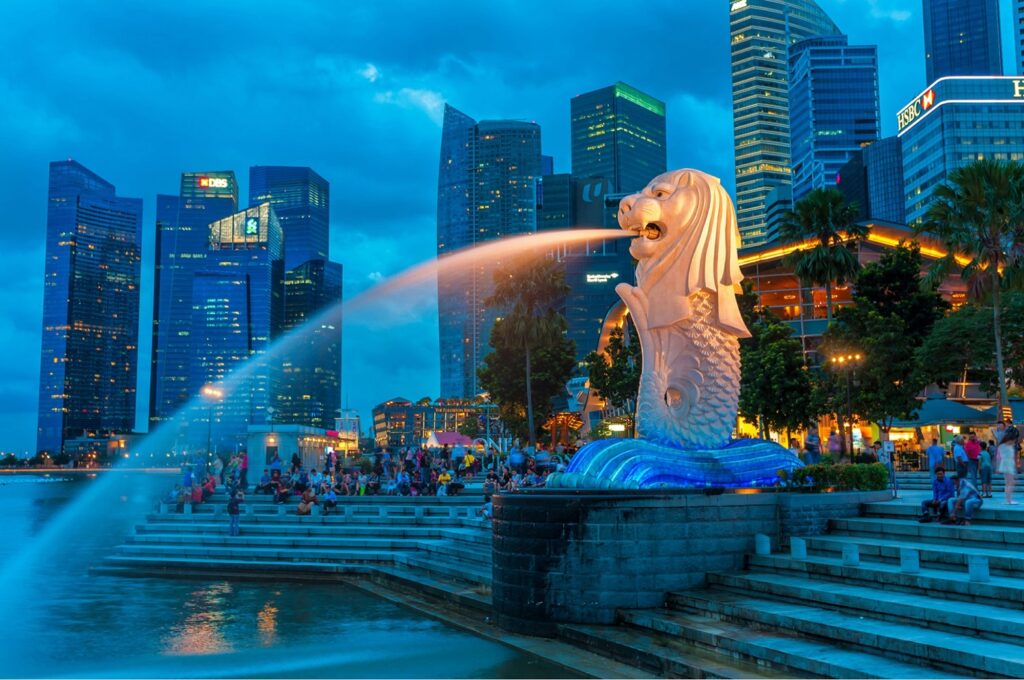
Merlion is a symbol of Singapore, an entity with the head of a lion and the body of a fish, embodying fearlessness, strength, and connection with the sea element. The Merlion image was designed by designer Fraser Brunner at the request of the Ministry of Tourism of Singapore and has nothing to do with the history and mythology of Singapore. The emblem of the city in the form of a concrete statue with a height of 8.6 m was created by sculptor Lim Nang Snow in 1972 and installed on the Clark Key embankment. Merlion Square breaks around. A 37-meter replica of the statue adorns the park on Sentosa Island.
30. The Float @ Marina Bay
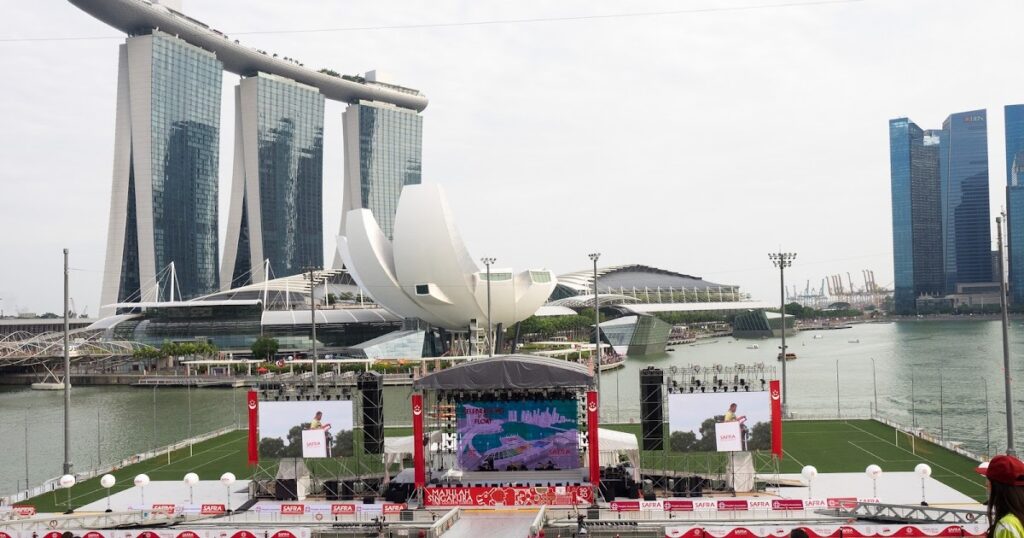
In Marina Bay, right in the middle of the water’s surface, there is the world’s only stadium on the water. The 120×83 meter football field is built on pontoons, the stands for 30,000 spectators are on an artificial piece of land adjacent to the shore. The sports arena can be easily transformed for various events. According to official data, the platform can withstand 1,070 tons. However experts say that this figure is underestimated at least twice. In 2010, the floating stadium hosted the opening ceremony of the Summer Youth Olympic Games. In the evenings, the illumination of the sports facility becomes part of a laser show on the water.
What is Singapore famous for?
Singapore is famous for its highly developed economy, modern architectural solutions, cleanliness, and safety. It is also known as a financial center, and has a diverse cuisine and cultural heritage, as well as unique attractions such as Marina Bay Sands and Gardens by the Bay.
What dishes are definitely worth trying in Singapore?
In Singapore, it is worth trying hoi lo (fried noodles with seafood), laksa (spicy noodle soup), chili crab, roti prata (tortillas with stuffing), as well as satai (kebabs with peanut sauce), and kaya toast (toasts with coconut jam).
How to Stay Connected During Your Singapore Trip?
In any trip, regardless of the country, it is important to always stay connected and use eSIM — an integrated SIM card that provides high-quality and uninterrupted communication in 190+ countries around the world.
To purchase and activate eSIM on a smartphone, you need to select an eSIM provider, for example, eSIM Plus, select a tariff plan, confirm, and activate it. After that, eSIM can be used in the selected country and stay in touch around the clock.
Forget about roaming and searching for local operators. eSIM is the future of communication, which is available today.
Use only the best eSIM Plus service and travel with pleasure.





